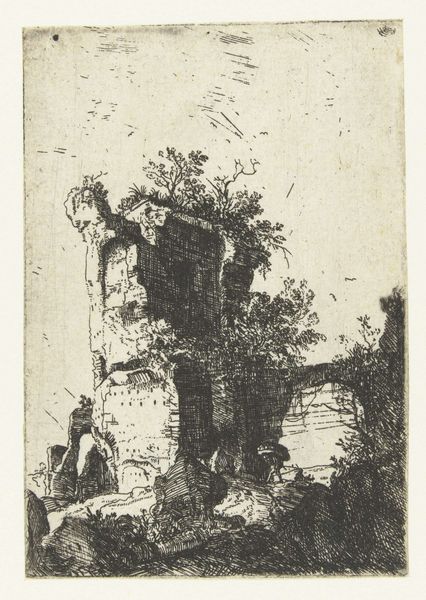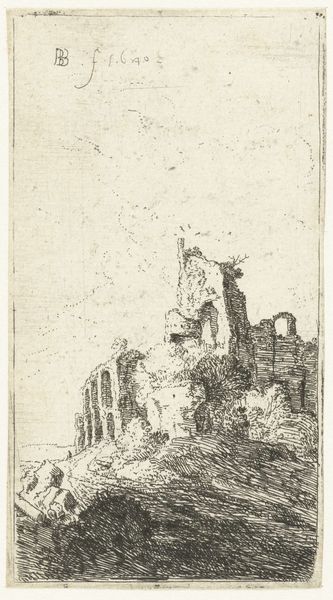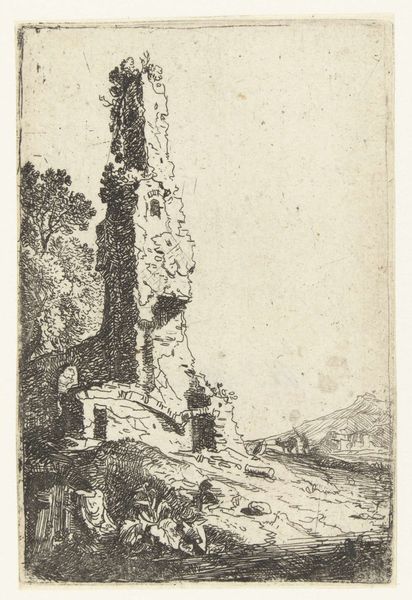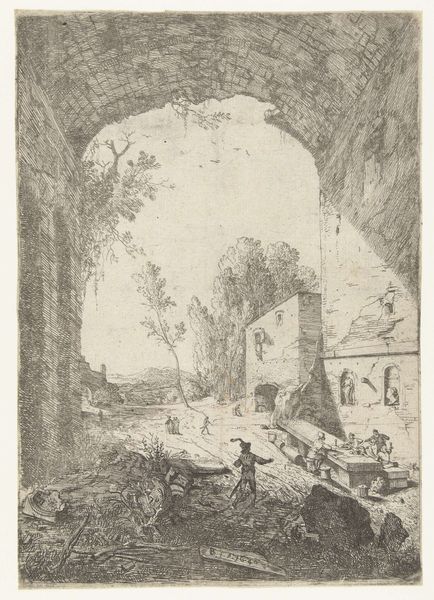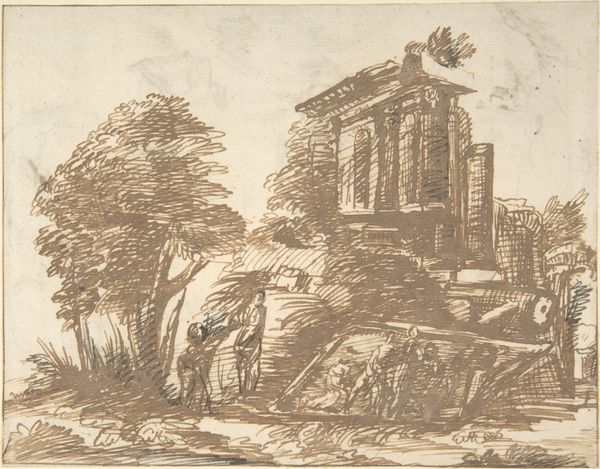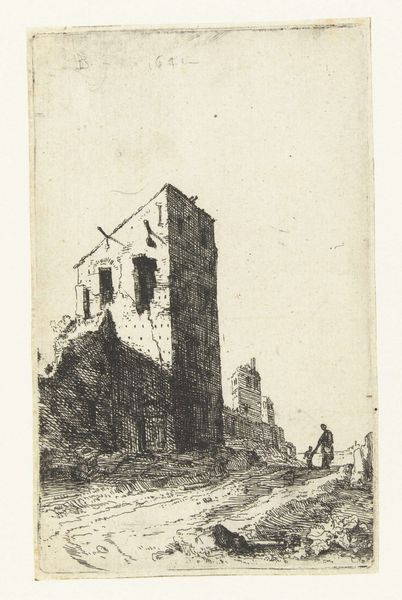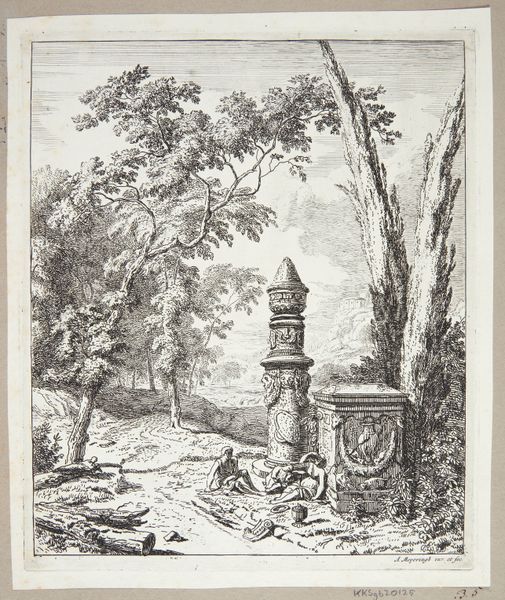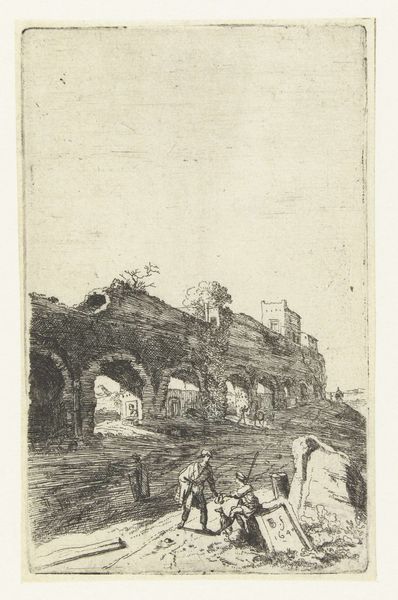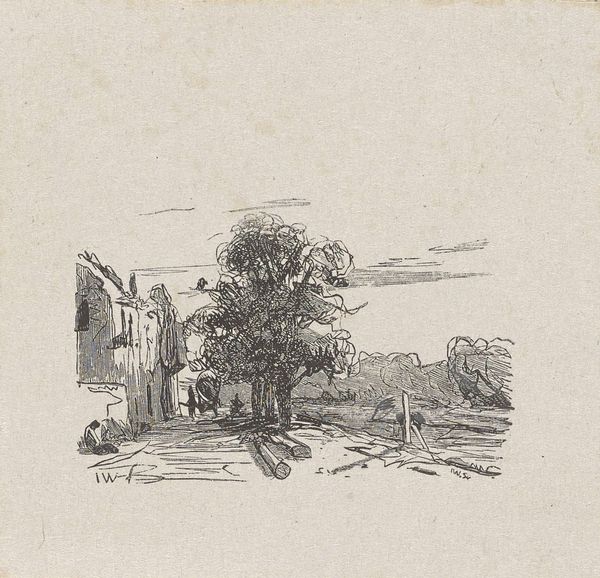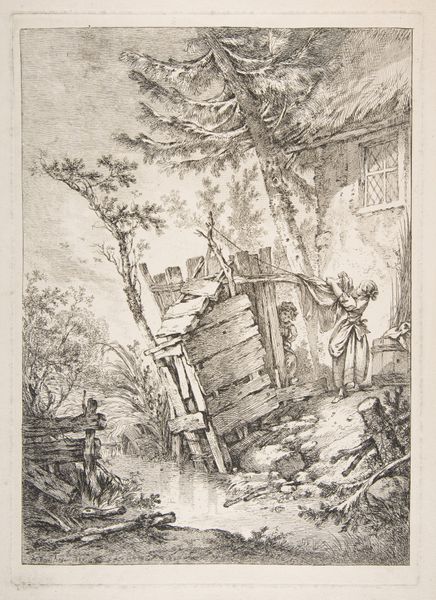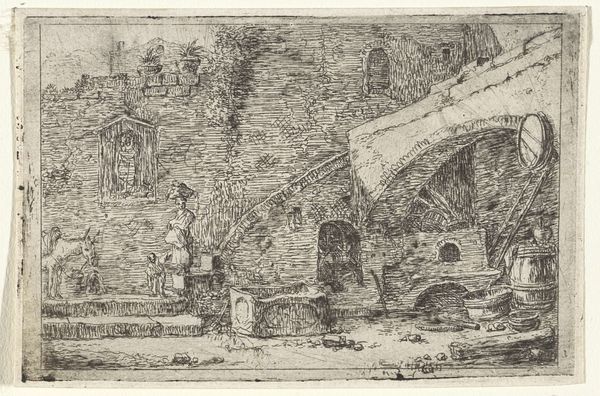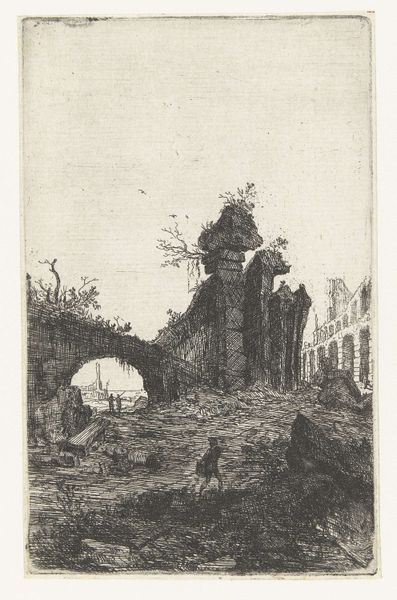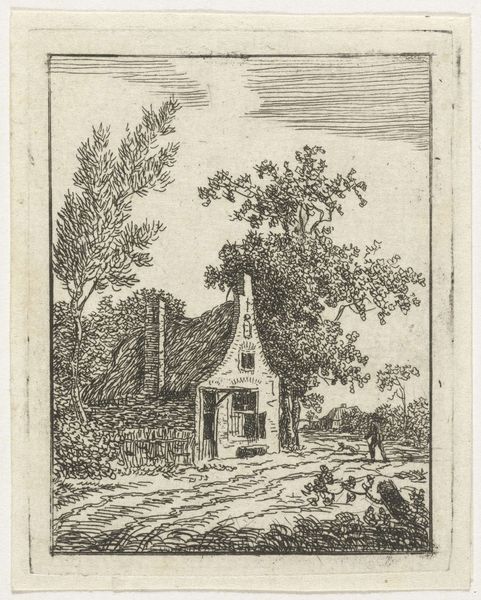
drawing, print, etching
#
drawing
#
baroque
# print
#
etching
#
landscape
Dimensions: height 96 mm, width 64 mm
Copyright: Rijks Museum: Open Domain
Curator: This etching by Bartholomeus Breenbergh, created around 1639-1640, is titled "Derelict House with a Hexagonal Tower". Editor: It immediately evokes a feeling of melancholy. The detail is remarkable, yet the image itself whispers of decay and forgotten stories. Look how the tower looms, almost skeletal, against what might have once been a vibrant backdrop. Curator: Breenbergh, a pivotal figure in the Dutch Italianate landscape tradition, frequently depicted ruins. His choice to feature decaying architecture wasn’t merely aesthetic; it spoke to the changing socio-political landscape of 17th-century Europe. What narratives are suggested to you? Editor: I'm struck by how these picturesque ruins serve to almost romanticize colonialism. They evoke feelings of nostalgia, but mask the inherent violence related to appropriation and cultural disruption of many locations outside Europe. This piece asks for critical questioning around the allure of a scene of picturesque desolation, inviting dialogue regarding the less savory dimensions of power. Curator: That's a compelling reading. Ruins often signified the transience of power and earthly ambition, fitting neatly within the broader Baroque fascination with vanitas. By showcasing crumbling structures, Breenbergh invites viewers to consider time, loss, and perhaps, a meditation on moral decay? Editor: But what happens if, instead, we use that historical reading to explore whose ambitions are represented? We often see those meditations, the artistic exploration of decline and human frailty. Who is served by only observing the romantic aesthetics, ignoring the structures left behind in favor of what the ruin “represents”? The tower's decline serves more than as a representation of lost power; there's an underlying reality within those walls. Curator: Perhaps Breenbergh's etching can be appreciated both as a poignant memento mori and as an implicit commentary on cultural and power dynamics? The appeal definitely lies in its intricate detailing, like the rendering of the stone texture, and how the architectural details create a vivid illusion of depth within this intimate print. Editor: I agree. By viewing it through both lenses we move past the romantic melancholy and towards more crucial, layered reflections about representation, ownership, and how we engage historical legacies embedded within art. This layered understanding reframes the aesthetics through the politics of existence and memory.
Comments
No comments
Be the first to comment and join the conversation on the ultimate creative platform.
